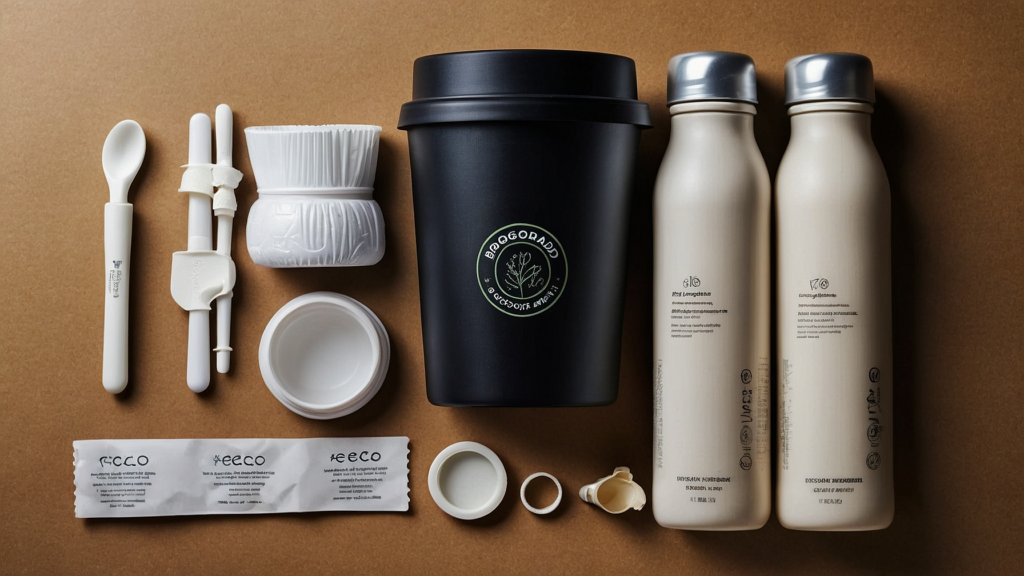Did you know that biodegradable plastics are emerging as a more sustainable alternative to conventional plastics? Environmental issues are gaining increasing attention. Finding ways to reduce the impact of plastics on the environment is essential.
So, the question arises: How can we do that? Is biodegradable plastic the solution? Is it really possible to reduce pollution and preserve natural resources by changing the type of plastic?
In this article, we will explore the world of biodegradable plastic. We will discover whether it is the answer we are looking for. We will understand what biodegradable plastic is, its types, advantages and disadvantages, and the production process.
By the end of this article, we hope you will have a clearer view of biodegradable plastic. This way, you can make more informed decisions about using these materials.
Key Points to Consider:
- Biodegradable plastic is a sustainable alternative to conventional plastics;
- There are different types of biodegradable plastic, each with its own characteristics;
- Biodegradable plastic has advantages, but also disadvantages;
- Proper disposal is crucial for the effectiveness of biodegradation;
- Biodegradable plastic can contribute to pollution reduction and the preservation of natural resources.
What is Biodegradable Plastic?
Biodegradable plastic can be broken down by microorganisms into natural substances. This includes water, carbon dioxide, and biomass. This process is called biodegradation.
Microorganisms use enzymes to break the chemical bonds in the plastic. Thus, it transforms into simpler compounds. These compounds can be absorbed by the environment.
To be considered biodegradable, plastic must meet certain criteria. This includes the ability to be degraded by microorganisms and the conversion into natural compounds. It is also important that it does not leave toxic residues and that environmental conditions are suitable.
Biodegradable plastic is a sustainable alternative to conventional plastics. It reduces environmental impact and helps preserve the environment. As it decomposes, it prevents the accumulation of long-lasting plastic waste.

Additionally, the biodegradation process of biodegradable plastic is faster than that of conventional plastics. This means it can decompose in less time.
Using biodegradable plastic is also good for human health. It does not release toxic residues into the environment. This prevents contamination of soil, water, and air.
Moreover, biodegradable plastic can be made from renewable sources. This includes corn starch and sugarcane. This reduces dependence on non-renewable raw materials, such as petroleum.
| Type of Biodegradable Plastic | Biodegradation Process |
|---|---|
| Starch-based plastic | Enzymes break the starch bonds, turning it into sugar molecules that are easily absorbed by microorganisms. |
| Polyester-based plastic | Enzymes degrade the chemical bonds of polyester, turning it into water, carbon dioxide, and organic compounds. |
| PLA (Polylactic Acid) plastic | Microorganisms convert PLA into lactic acid, which is easily biodegradable. |
What are the Types of Biodegradable Plastic?
Biodegradable plastics are divided into bio-based plastics, compostable plastics, and oxo-biodegradable plastics. Each has its own degradation methods and uses. They are a good alternative to common plastics.
Bio-Based Plastics
Bio-based plastics come from renewable sources such as corn starch and sugarcane. They are made from plant materials, which makes them environmentally friendly. They are made from starch, making them biodegradable.
Compostable Plastics
Compostable plastics decompose quickly in composters. They require heat, moisture, and microorganisms to break down. Thus, they turn into organic matter.
Oxo-Biodegradable Plastics
Oxo-biodegradable plastics have additives that help break them down into small pieces with light and oxygen. These pieces are then degraded by microorganisms. Degradation can take longer, depending on the environment.
Understanding the differences between these plastics is important for choosing the best one for each situation. Bio-based plastics are a good overall choice. Compostable and oxo-biodegradable plastics have specific uses.
| Type of Biodegradable Plastic | Characteristics | Applications |
|---|---|---|
| Bio-Based Plastic | Produced from renewable sources, biodegradable | Packaging, disposable products, utensils |
| Compostable Plastic | Degradation under composting conditions | Organic food packaging, compostable trash bags |
| Oxo-Biodegradable Plastic | Accelerated degradation by additives and exposure to light and oxygen | Packaging, disposable products |
The Future of Biodegradable Plastics
Biodegradable plastics are gaining momentum as a sustainable option. Various sectors are adopting them. Research and development are key to improving these materials. Awareness and government policies are also important.
Advantages of Biodegradable Plastic
Biodegradable plastic is a good alternative to common plastics. It helps reduce pollution and uses fewer non-renewable resources. Additionally, it lowers carbon footprint and encourages innovation.
Pollution Reduction
This plastic decomposes faster than others. This means less waste in the environment. It helps protect marine and terrestrial life.
Lower Dependence on Non-Renewable Resources
It uses fewer non-renewable resources. Instead of petroleum, it can come from renewable sources. This helps preserve natural resources.
Encourages Innovation
Research and development in biodegradable plastics drive innovation. It leads to new solutions and technology improvements.
Disadvantages of Biodegradable Plastic
Although biodegradable plastic has many advantages, there are also disadvantages. It is important to understand these challenges to make informed decisions.
Production Costs
Production of biodegradable plastics can be more expensive than conventional plastics. This is due to higher raw material and production costs.
Degradation Conditions
Some biodegradable plastics require specific conditions to degrade. This can make them less effective in some environments.
Limited Availability
Biodegradable plastics are still not as widely available as conventional plastics. This limits their use in various sectors.
How to Use Biodegradable Plastics Properly
Proper use and disposal of biodegradable plastics are crucial. Ensure they are disposed of in appropriate facilities. Some types need composting, while others need specific conditions to decompose.
Awareness and education about biodegradable plastics are also important. This helps users make informed decisions and properly dispose of these materials.
Conclusion
Biodegradable plastics are a promising solution to reduce environmental impact. However, they have their limitations. It is essential to consider their advantages and disadvantages when choosing them.
Proper disposal and awareness are key to making the most of biodegradable plastics. The future of sustainable materials depends on research, innovation, and responsible use.
